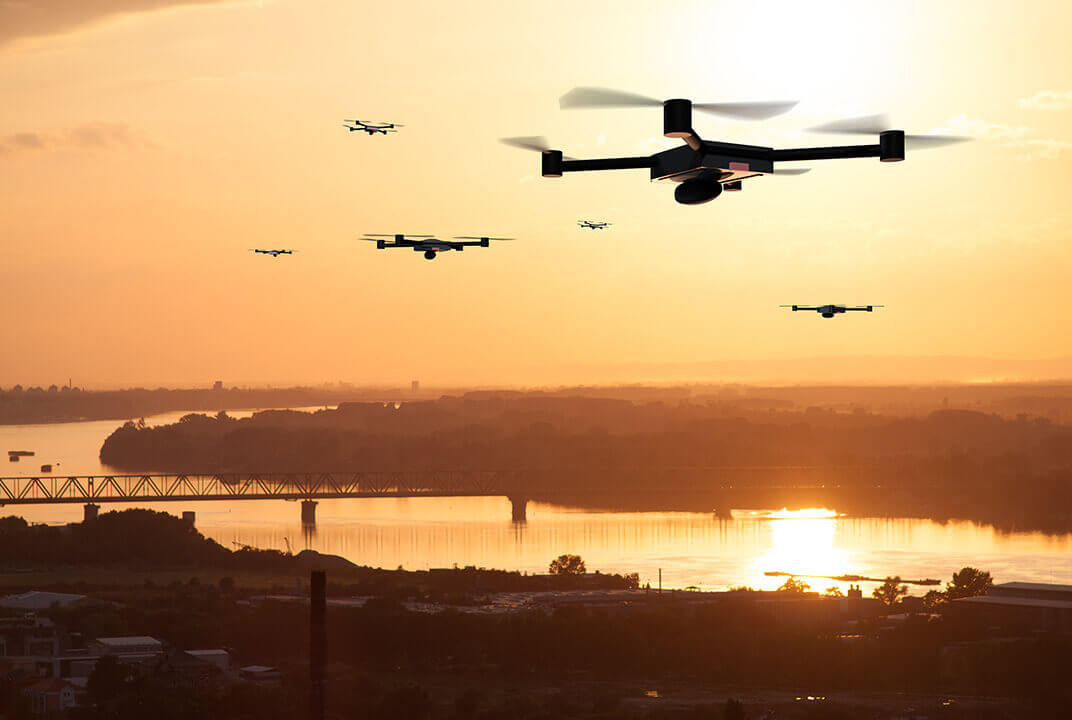Insight | Collaboration critical to exponential growth of commercial UAV market
Collaboration critical to exponential growth of commercial UAV market
null
Inmarsat’s dynamic partnership with Cobham has led to the AVIATOR UAV 200 – a game-changer for UAV connectivity.
Inmarsat’s dynamic partnership with Cobham has led to the AVIATOR UAV 200 – a game-changer for UAV connectivity.
If there’s one unifying factor linking this century’s most successful businesses, it’s a reliance upon and an appreciation of collaboration . Partnerships are a key driver of performance, innovation and, ultimately, progress.
This is something Inmarsat and aerospace company Cobham have come to value through the years and our alliance with Cobham has seen us set the benchmark for L-band satellite communication products in the aviation market.
This productive partnership is now driving forward aviation’s newest and most innovative sector – unmanned aerial vehicles (UAVs). The Cobham AVIATOR UAV 200 is an airborne terminal that allows for Beyond Visual Line of Sight (BVLOS) operations, critical for the commercial growth of the market. By integrating everything into one compact, lightweight box, Cobham’s new solution is perfectly set up for reliable connectivity through our dedicated L-band network to redefine UAV satellite communication performance.
In short, it is the world’s smallest and lightest full coverage UAV solution to utilise our ground-breaking connectivity.
Reliability of service key
Sounds simple, doesn’t it? But without this concerted collective effort it might have been a different story, as Andrew Legg, Cobham’s Regional Sales Director, acknowledges.
“Inmarsat was key,” he explains, “because it has a well demonstrated track record and a highly reliable network. Over 99.9% network reliability - that's where Inmarsat plays the critical role. They have the network technology that can deliver the service reliability that is on demand today.”
Once Cobham’s engineers had created the AVIATOR UAV 200, with a radical small form factor and reduced weight, we enabled UAV original equipment manufacturers (OEMs) to test it by initiating a Pop-Up Lab in early 2019.
Recalling the Pop-Up Lab, Legg notes the event was a catalyst for the development of the UAV market as it not only confirmed the potential of UAVs, but also highlighted that previous connectivity shortcomings had been overcome.
“We gave the AVIATOR UAV 200 to some UAV integrators and operators and they worked well,” he recalls. “And it was at that point that other companies started to look at this and realised that there was something that they could do in this space too.”
Through testing and trialling the AVIATOR UAV 200, OEMs were able to develop new ideas, iterate further and continue to build. And by acting as a facilitator for these developments, we once again highlighted the benefits of partnerships and co-operation.
A real breakthrough and subsequent step change
That Cobham is spearheading developments in the still-nascent UAV market should come as no surprise. As well as satcom, the aerospace pioneer is active in a range of aviation products – from inflight refuelling and oxygen systems to servers and radio management panels.
It was the product of some excellent work by its antenna engineering team in Cape Town that laid the foundations for the AVIATOR UAV 200. By bringing Phased Array Antenna technology down to a size and specification (smaller than the footprint of an A4 page and fully integrated, weighing just 1.45 kg / 3.3 lbs), it could be used on small form factor fuselage aircraft.
“This was a real breakthrough in terms of what Cobham offered in comparison to its previous capabilities and how that translated to the rest of the industry,” says Legg.
Another breakthrough came in the reduction of the development time of the AVIATOR UAV 200. Unlike the design of new products for traditional manned aviation, which are understandably more constrained by safety regulations, it’s not the same for the UAV sector. Legg points out that the product was still rigorously tested internally to aviation standards, but without the formal qualification requirements needed in the manned aviation world.
This means that step changes like the AVIATOR UAV 200 can happen quicker – not least because of effective collaboration.
The only viable solution in solving BVLOS
According to Legg, regulation will be key in pushing the UAV market forward. With UAV safety a critical component in ensuring current momentum isn’t lost, Inmarsat’s robust and reliable connectivity solution offers real viable capability when it comes to solving the problem of BVLOS control of aircraft. And with safety assured, the benefits of this market are limitless says Legg.
Outside of initial use cases dominated by government, safety and security type applications, this sector will get really interesting, and the benefits will be increasingly heightened, when it comes to facilitating critical safety features. The true benefits are still being explored in urban air mobility, unmanned cargo, medical supply delivery, hostile terrains and environments hazardous to humans in flight. continues Legg.
There are also other societal benefits. Especially when it comes to sustainability. “I was listening to UAV operators explaining how they scan potato field s,” he explains. “And over time they can track and measure the growth of every potato. So they know where to target insecticide and where to put plant food. They also know when potatoes are at the optimal size to be picked. And which ones can be left in the ground for a bit longer.”
There will of course still be challenges. Legg says it’s imperative there is sufficient collaboration between regulators, operators and manufacturers to ensure safety, and imperative that the wider societal benefits are there for all to see as this will drive society’s acceptance of unmanned technologies.
Collaboration is crucial and should be cultivated
Looking ahead, Legg is quite clear when asked about what success looks like for the UAV space. Cobham’s ultimate goal is the integration of UAVs into manned airspace and facilitating that is likely to come as a result of successful partnerships with other forward-thinking companies such as Inmarsat and the development and deployment of products like the AVIATOR UAV 200.
“What would be music to my ears,” he concludes, “is to hear that regulator X, Y or Z has approved the case for operator ABC to perform these operations and that part of the approval was based on BVLOS connectivity from Inmarsat and Cobham. It’s why partnerships are so important and critical, and why they should be fostered carefully.”


